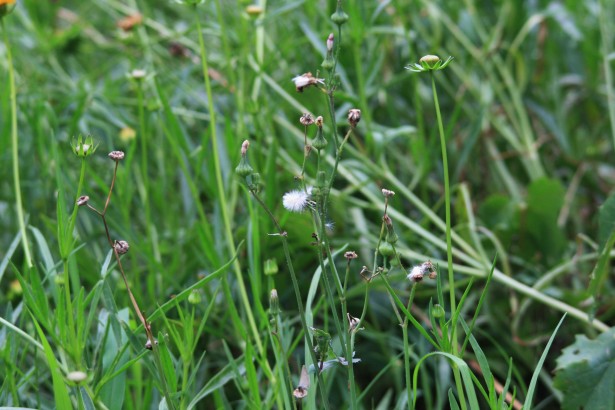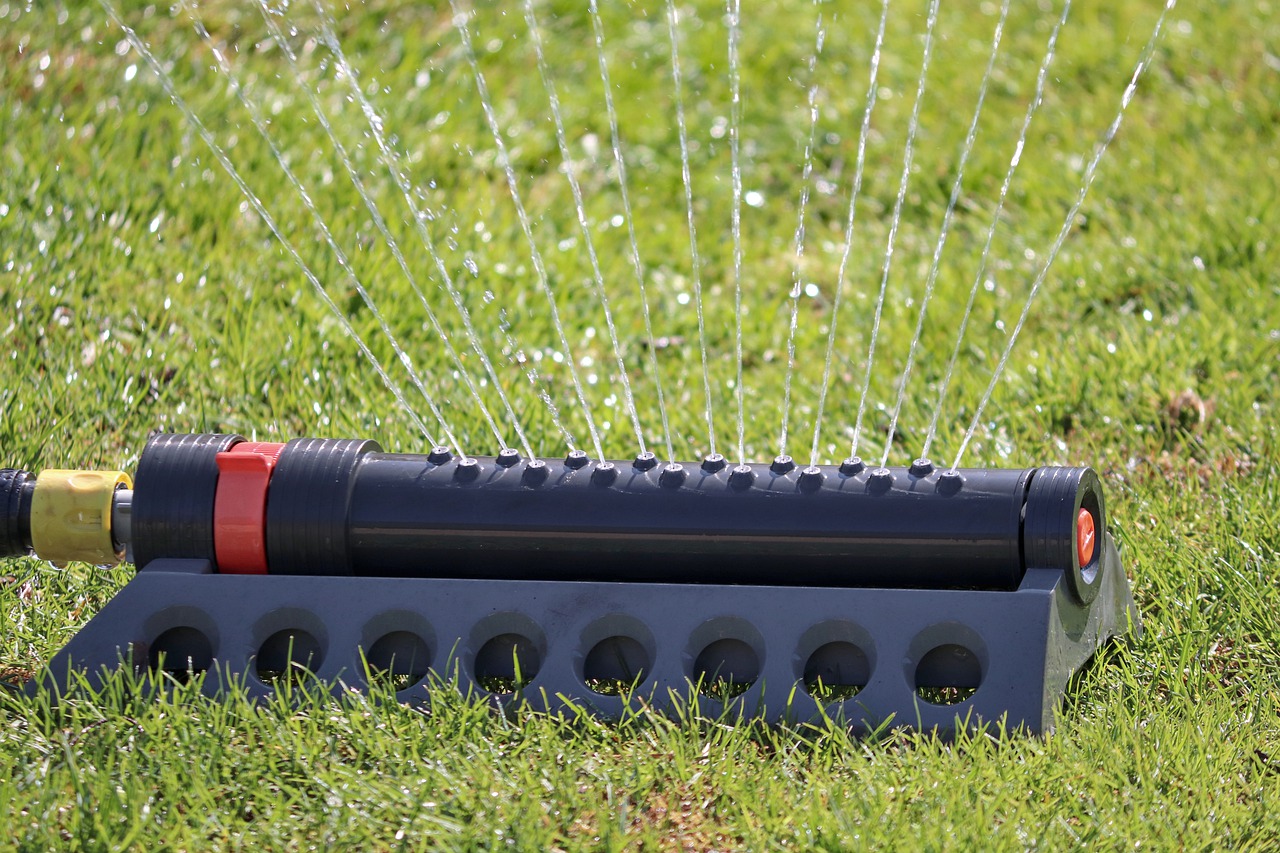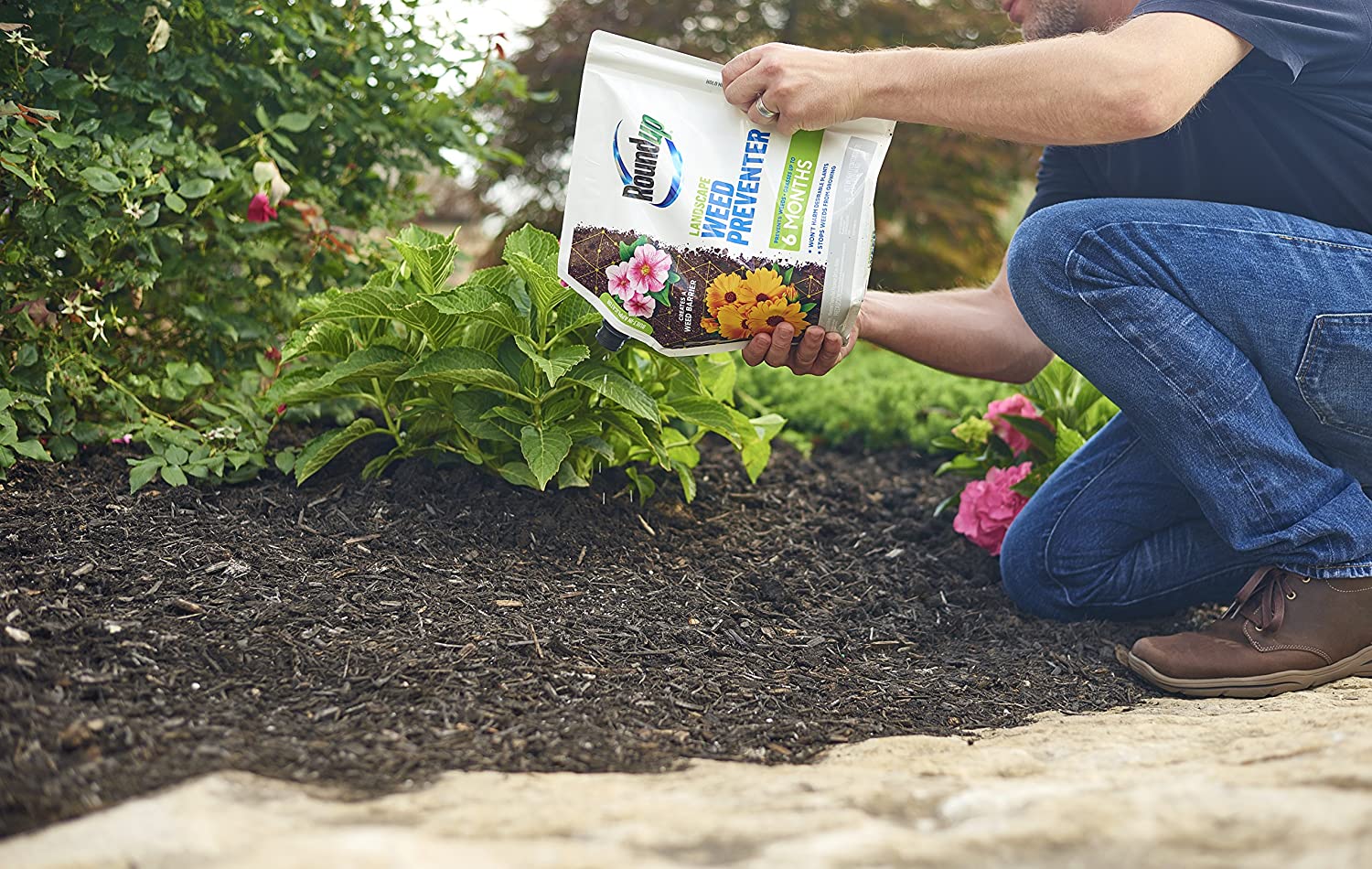- The Best Dandelion Puller Options You Should Know of - September 23, 2021
- Kentucky 31 Tall Fescue Review and Guide - September 14, 2021
- Zoysia Sod Guide: Is It Right for Your Needs? - September 2, 2021
Just because you’re using a pre-emergent herbicide, doesn’t mean it’s going to be effective. There’s a right and a wrong way to do it, and it’s important to know not only when, but how to use it and what type of pre-emergent to use. This will mean the difference between a lush, green lawn and a spotty, weed-ridden piece of ground.
The important thing to note about pre-emergent weed killers is that they don’t kill what’s already been established. That means it won’t kill your existing grass, but that also means it won’t kill any weeds that have already sprouted. They simply stop the seeds of these unwanted pests from sprouting at all.
There are several different types of pre-emergent herbicides on the market intended for lawns, flower beds, and vegetable gardens. Applying them too early will keep the seeds you want in your ground from sprouting, but applying them too late means they won’t work at all.
Timing can be tricky, so we’ll cover which type of pre-emergent to use, when to apply it to different classifications of weeds, and how the application process looks for different climates and zones.
What is a Pre-Emergent Herbicide?

A pre-emergent herbicide is a chemical that prevents weeds in your lawn. They won’t prevent germination, but they’ll control the weeds as they begin to sprout. Application timing is the most important factor to consider when using these types of products.
However, there are pre-emergent herbicides, such as Dithiopyr, that work as both pre-and post-emergent, so they can work to a certain extent after the weeds sprout. Here are some of the possible active ingredients contained in pre-emergent herbicides:
- Benfluralin – This herbicide is a dinitroaniline, and it’s intended to control weed growth by stopping root and shoot development in lawns, ornamentals, and crops.
- Dithiopyr – This mitotic herbicide inhibits weed root growth in lawns, ornamentals, and vines.
- Isoxaben – This herbicide is a benzamide and an isoxazole. It controls broadleaf weeds in nut tree orchards and vineyards.
- Oxadiazon – This is a dinitroaniline herbicide like benfluralin, but it’s intended to control broadleaves, sedge, bramble, bush vines, and grasses.
- Pendimethalin – This is another dinitroaniline herbicide inhibiting cell elongation and cell division. It can prevent or destroy weed growth in lawns, ornamentals, and crops.
- Prodiamine – This dinitroaniline herbicide controls weeds in crops like cotton, alfalfa, and soybeans, but can also be used in ornamentals.
- Siduron – Another dinitroaniline herbicide, this one prevents weeds when you seed or overseed your lawn.
- Trifluralin – Use this dinitroaniline herbicide to control annual grasses and broadleaf weeds in the nut, tree fruit, or vegetable gardens and in grain crops.
Depending on which pre-emergent you use, it will work in one of three ways. It will either inhibit root growth, inhibit cell division, or eliminate enzymes that are essential to the growth of certain weeds. Most pre-emergents have dinitroaniline herbicides in them, so they don’t prevent germination. They simply stop the growth of roots, which is what makes younger plants more susceptible to them.
Forms of Pre-Emergent
Pre-emergent herbicides come in two basic forms: granules or liquid. Both of these work the same, so which one you choose is based solely on personal preference. Liquid pre-emergents are easy to apply with a sprayer. You can purchase full-strength products that are already mixed and ready to apply, or you can purchase concentrates that you have to dilute with water first.
Granular pre-emergents are made up of tiny grains and can be applied with a spreader for more even coverage in a large area. Some gardeners will sprinkle the granules evenly by hand throughout a flower or vegetable garden.
Developing Your Weed Control Strategy

As you develop a strategy to tackle your weedy lawn, remember that you won’t get rid of every single weed with one application. There’s no magic formula that takes care of everything all at once. Your program needs to be effective enough to improve your lawn over time, and will likely change as your needs change every year.
All weeds have different life cycles and reproduction methods, so their survival strategy won’t be completely eliminated upfront. In fact, some seeds will lay dormant for several years before they germinate, and they can survive fire, drought, and pre-emergent applications. Whether you think your applications are working or not, it’s critical that you don’t skip a year of pre-emergent.
Once your property seems to be completely clear of these seeds, they can be transported from other places by animals, human activity, wind, or water. As you develop a strategy to keep your lawn free of weeds, you should consider the following:
- Is your goal to prevent weeds, eradicate them, or both?
- Which weeds do you want to control?
- What are the life cycles of these weeds?
- What is the proper timing for pre-emergent?
- Which plants do you want to keep, and are you using a pre-emergent that is safe for those plants?
How Pre-Emergent Herbicides Work

There are three principles you can remember to better understand how pre-emergent herbicides work.
Pre-emergent Herbicides Are Meant To Control Germinating Weed Seeds
These products target weeds that are still under the soil. Don’t waste time and work down the road by applying it when the weeds start popping up. The appropriate time of application is while they’re still underground.
The weeds will be killed when they begin to sprout and they come in contact with the herbicide barrier. Some seeds will remain dormant and won’t be affected by the pre-emergent, which is why this is a continuing process that evolves over years of changing needs. If you have a large infestation, it will take several years of consistency to see a large reduction.
Because pre-emergent won’t control existing weeds, you may still see mature weeds in your lawn. You’ll also continue to have dormant seeds pop up every year. It’s best to dig mature or sprouting weeds out by hand to eliminate them.
It’s important to remember that your pre-emergent could affect desirable plants, including turf. If you apply a pre-emergent, also seed your turf in the same season. Seed first and apply your pre-emergent at least 6 weeks later. This allows for lawn establishment so the pre-emergent will have a smaller effect. You can also seed at least 3 months after the pre-emergent application.
For Best Results, Mix The Pre-emergent Correctly And Apply It Evenly To The Target Area
Every pre-emergent should contain mixing instructions. Mixing it correctly ensures that the spray is the right strength. Read the recommendations and calibrate your sprayer appropriately.
You can think of your pre-emergent like a blanket. You need to evenly cover the entire area, and thorough coverage is important. Spot spraying doesn’t work, because there’s still room for seeds to sprout and come through areas where there’s no barrier.
The instructions will tell you how much to use per 1000 square feet or per acre and how much herbicide to use for every gallon of water. To cover 1000 square feet, it takes 1-2 gallons of solution.
You Must Water In Your Pre-emergent Herbicide

Water activates the herbicide and creates a barrier below the surface. You need about half an inch of irrigation. If it rains within 21 days of the application, you won’t need to water your lawn, but if there’s no rain in the forecast, it’s best to set up a sprinkler. You can also wait to apply your pre-emergent until there’s rain in the forecast, as long as it’s still early enough in the season.
Weed Classifications and Pre-Emergents
Weeds are classified by their life cycles, which can help you determine when to apply your pre-emergent. Early spring and early fall are the most effective times to apply a pre-emergent, but there are some other things to know.
Summer Annuals
The most common example of a summer annual is crabgrass. It’s the peskiest summer annual for most people. Other examples are spurge, pigweed, mallow, and lambs quarters. The life cycle of these weeds is one year and they germinate in the spring. They flower and produce seeds, then die in the fall.
For most of the United States, you can apply a pre-emergent for these types of weeds in the early spring. For southern states and states on the coast, apply it in late winter.
While applying in the early spring will take care of these summer annuals, it will also attack your desired plants like flowers and vegetables. Make sure you apply this pre-emergent in your flower beds or vegetable gardens after these things have already sprouted.
Winter Annuals
Annual bluegrass is the most common winter annual, but you may also see mustards, chickweed, or shotweed. Their life cycle is also one year, but they germinate in the fall, flower, produce seeds, and then die in the spring.
A good rule of thumb is to apply a pre-emergent for these weeds by September 15th. Late summer or early fall is ideal. Don’t be fooled into thinking you don’t need this application. If you’re doing everything right, you’ll go into the fall with a weed-free lawn, which may indicate that this application isn’t necessary.
However, your spring pre-emergent is no longer protecting your lawn and invasive weed varieties are just waiting for cooler weather. Once they sprout, they remain small, and you may not even see them until the spring when they will grow with a vengeance. After that, it’s too late.
When to Apply Pre-Emergent

Your spring pre-emergent should be applied when the soil temperature is about 55 degrees or more. You don’t have to set a specific date to apply for your pre-emergent. Instead, wait until the soil has been at least 55 degrees for 48 hours.
The climate varies in different regions, so there’s no specific date that will work best for everyone. USDA growing zones in the south will need to apply their pre-emergent around the first of March, but in northern states, the soil won’t be ready until June.
Wait to apply your fall pre-emergent until the soil is around 55 degrees again. Daytime temperatures should be 65-75 degrees for the soil to be cool enough. Once again, the timing of this application will vary by region, with northern states being ready much earlier than southern states.
Determining the Type of Pre-Emergent You Need
This process involves identifying the weeds prevalent in your lawn and then finding a pre-emergent that can manage it. It’s a fairly simple process. Just monitor your lawn every summer and winter and make a note of which weeds you see.
If you struggle with weeds in the summer, but you don’t see anything in the winter, you need a spring pre-emergent application to tackle it. If your lawn is the other way around, you’ll need a fall pre-emergent application. If you’re one of the lucky ones who struggle with weeds in both seasons, you’ll need both applications.
Unfortunately, predicting which weeds you’ll have next year based on what you had last year is hit or miss. Weeds can travel via the wind, animals, humans, and all sorts of ways. There will be years when your yard will be riddled with weeds you’ve never seen before. That’s why it’s best to apply a pre-emergent twice per year.
How to Use a Pre-Emergent
While I can provide some general guidelines for how to use a pre-emergent, it’s up to you to read and follow the manufacturer’s instructions for the exact pre-emergent you are using. Here are some rules for applying a granular or a liquid pre-emergent.
Granular
- Pour your granular pre-emergent into a spreader for large areas, or sprinkle by hand in small areas.
- Apply the grains evenly at a rate of 1.5-6 pounds per square foot across the entire treatment area.
- Follow your application with at least half an inch of rater via a sprinkler or rainfall within 14 days.
Liquid
- If you’re using a concentrate, mix the concentrate with water according to the manufacturer’s directions. If you’re using a pre-mixed solution, no additional mixing is necessary.
- Pour the liquid into a sprayer.
- Spray evenly over your coverage area at a rate of 2-6 quarts per acre.
- Follow it with half an inch of water via a sprinkler or rainfall within 21 days.
If you plan to reseed your lawn, do so 6 weeks prior to applying your pre-emergent or wait at least 8 weeks after. While keeping your lawn lush requires seeding in the late spring or early summer, your pre-emergent will affect these grass seeds if you do it at the wrong time.
Common Mistakes

There are some common mistakes people make when applying their pre-emergent, so watch out for these things:
- Wait at least 8 weeks to overseed if you’ve already applied your pre-emergent.
- Wait at least one year after applying a pre-emergent to lay new grass sod.
- Don’t apply pre-emergent to turf that’s been damaged by pests, low fertility, or drought.
- Don’t aerate your turf too soon after a pre-emergent application or it will destroy the pre-emergent barrier.
- Don’t use a pre-emergent on a putting green.
- Don’t use an irrigation system to apply your pre-emergent.
- Always water after your pre-emergent application.
- Don’t use fertilizer at the same time as your pre-emergent.
- Use the correct type of chemical for the grass species in your lawn.
FAQs
Answer: Pre-emergents are considered safe, as long as you use them how they’re intended. It’s important to read the instructions and mix the pre-emergent exactly as indicated. Laws in the United States require pre-emergents to undergo an in-depth registration process with the EPA before they hit the market.
Answer: While there’s no rule about the exact timing of your pre-emergent, you need to wait until the soil temperature is at least 55 degrees for 48 hours. You can put it down as early as you like, as long as the soil is warm enough. However, keep in mind that the earlier you put it down, the less effective it will be later in the season. Pre-emergents typically only last 3-5 months.
Answer: Every climate is different. In the spring, warmer climates will be ready earlier but in the fall, cooler climates will be ready earlier. As a general rule, your spring pre-emergent application will fall somewhere between March and June and the fall application will be in August or September.
Answer: Every product is different, but you can expect treatment to last 3-5 months. That means timing is key. People generally do an application in the spring and in the fall, but you can also reapply your emergent about a month after your first application to increase its effectiveness for late sprouters.
Answer: Some rain after an application is beneficial because pre-emergent needs to be watered in, but heavy rain or flooding can wash away the treatment before it’s able to create a barrier. Once again, timing your application when there’s some rain in the forecast is good, but if there’s a lot coming, you’ll need to wait.
Answer: Pay attention to the weather and apply your pre-emergent before it rains to ensure it gets watered in. If there’s no rain in the forecast, you can water it in with a sprinkler. However, you shouldn’t apply your pre-emergent during or after it rains. If you apply a pre-emergent in wet conditions, it will get washed away before it can penetrate the ground.
When to Apply Pre Emergent: Final Thoughts
Effectively applying a pre-emergent is all about timing. Sure, you have to consider the type of grass you have and the kinds of weeds you want to kill, but once you determine the type of pre-emergent you need, it will only work if you do it at just the right time.
Every climate and every lawn will have different needs. Evaluate the weather where you live to determine when you should apply your pre-emergent. Equally important is being consistent and applying your pre-emergent in both the spring and the fall to ensure maximum effectiveness.

